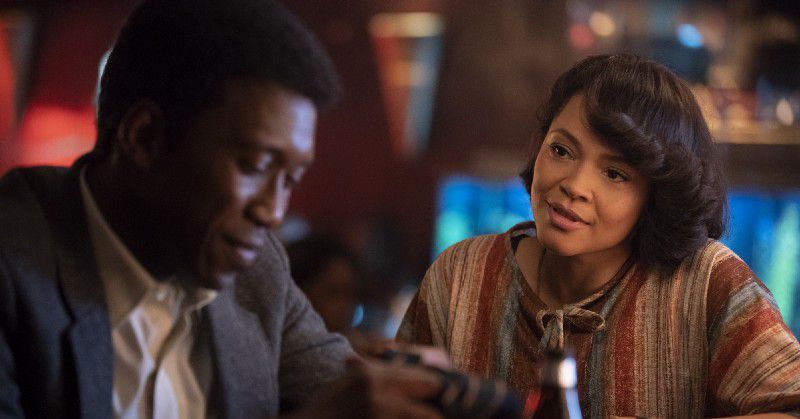Breaking down the cliffhanger beginning of True Detective season 3

The sense of horror suffusing the third season of True Detective comes not only from the central mystery but from Wayne Hays’ (Mahershala Ali) deteriorating memory. The case that’s been plaguing him is fascinating — the first two episodes set up the disappearance of the Purcell children, with Will turning up dead not too long afterwards, and Julie’s fingerprints appearing at a scene of a burglary a decade later — but the way that time plays tricks on Hays is more interesting, and more affecting.
The two threads aren’t mutually exclusive: the first couple of episodes of the season, “The Great War and Modern Memory” and “Kiss Tomorrow Goodbye,” use the vagaries of time to peel back the nature of the case Hays and his partner Roland West (Stephen Dorff) are investigating. But the most potent feelings of dread and panic are induced not by dead bodies or Satanic symbols, but by the moments and memories lost by Hays as he tries to remember what happened.
Scenes shift from the ’80s, when the initial investigation takes place; to the ’90s, when Hays, now deskbound, is pulled back in by Julie’s reappearance; to the recent past, as an elderly Hays is interviewed about the case for a true crime TV show. Sometimes they’re smooth transitions, serving the story, and other times they’re jarring, mimicking Hays’ own sense of disorientation.
:no_upscale()/cdn.vox-cdn.com/uploads/chorus_asset/file/13682633/1_ih_HK7RnWtS2AfFlwn1wuQ.jpeg)
The second episode ends on a cliffhanger that drives that sense of distorted perception home. At dinner with his son and his son’s family in the “present” timeline, Hays stares at a photo of his late wife Amelia (Carmen Ejogo). In the next moment, he’s standing in the middle of the street in his bathrobe at the intersection of Shoepick and Briarwood, with no clear clue as to how or why he got there.
It’s the first abrupt cut in the series (at least signalling dissociation or loss of time) that has remained in a single timeline — every other instance has seen Hays’ mind drifting out of a memory as a way to move between scenes — and it’s a promising set-up for what’s to come in the six remaining episodes of the season. The idea that Hays is an unreliable narrator is now an explicit part of the text, and means that closer attention must be paid to details. So long as Hays is the one driving the action, objectivity is lost, and stray notes may reveal just as much about him as they do about the case. That is, so long as he doesn’t forget everything along the way.
Digging into more emotional grounds rather than banking solely on aesthetics and an aggressive undercurrent of machismo (which, to be clear, still exists) is the best thing that True Detective has going for it. As the third season seems to be attempting to replicate the formula that made the first season such a success (a moody, mismatched pair of detectives; a case involving creepy totems; multiple timelines), it’s what the third season does differently that sets it apart.
The two big elements that make the show worth sticking with — at least for now — are the editing, which puts us squarely in Hays’ shoes, and the recognition of race. Up to this point, True Detective has, by and large, focused on white characters, and Ali’s casting as the main character (Hays may have a partner, but this isn’t much of a two-hander) shakes things up.
:no_upscale()/cdn.vox-cdn.com/uploads/chorus_asset/file/13682636/1_AzNvHwmE_Z27GZ0doQPdHA.jpeg)
According to interviews with Ali and showrunner Nic Pizzolatto, Hays was originally written as white, and Ali had been approached to play West. The significance of the change isn’t lost in the first episodes of the season, as Hays’ early interactions with Amelia are colored by the implicit acknowledgment that they’re black people operating in predominantly white spaces — Amelia in her work as a schoolteacher, and Hays as a police officer.
Their scenes together are striking for exploring parts of these characters’ lives that aren’t necessarily wholy tied to the case, but there’s an unevenness to the way that it’s handled that may stem from the way Hays was originally drawn. A few moments — the way the show-within-a-show is handled, for instance — seem to go out of their way to stress a certain level of social awareness that feels belabored and demonstrative (à la “See?? I’m woke!”) at best.
Which is to say, it’s the craft of the show — specifically that of Ali and Jeremy Saulnier (Green Room), who directed the first two episodes — that makes it worth staying with. Whether or not the series will manage to stay sharp (and recover from its nearly damning second season) remains to be seen.
[ad_2]
Source link





